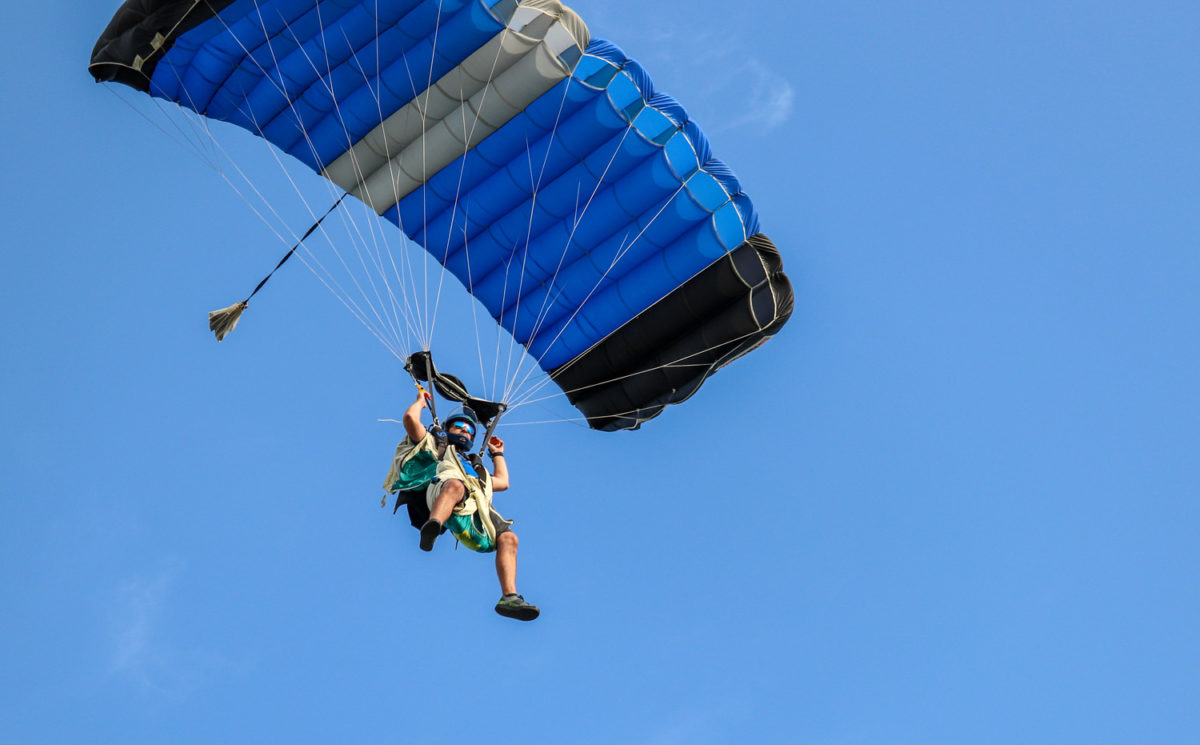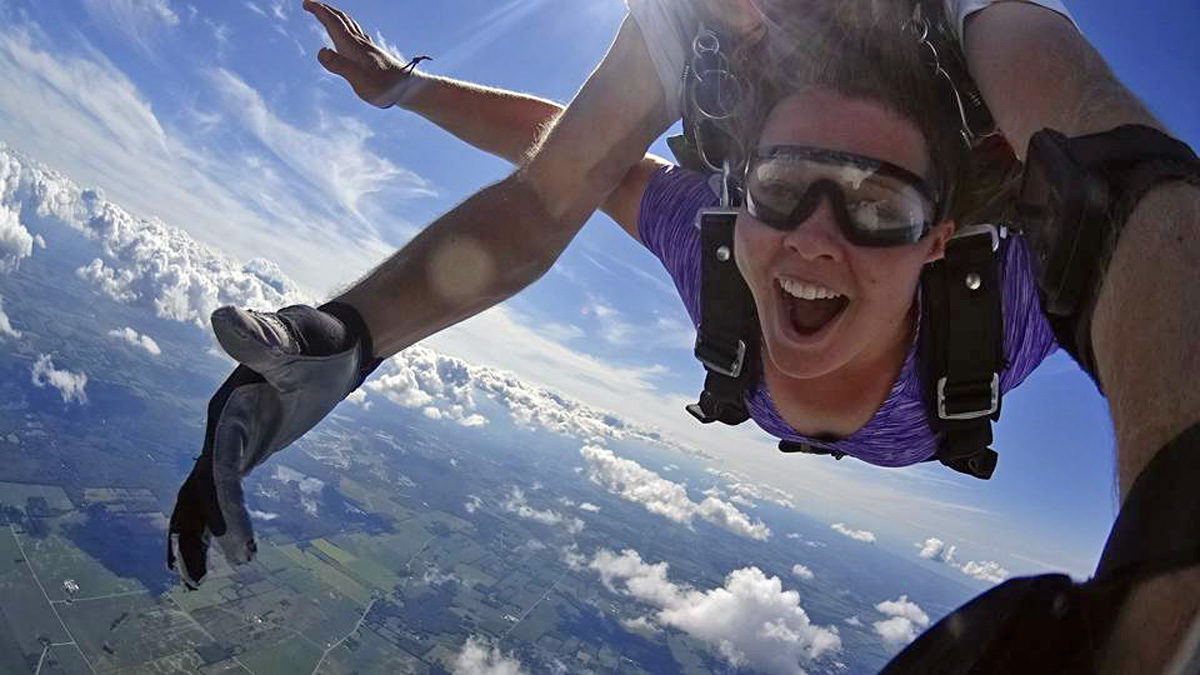Moving around with your body in freefall and flying a parachute both use the same methods of aviation studied and developed since the time of the Wright Brothers, and as such start with simple concepts and progress all the way through to thoroughly complicated. Let’s have a quick look at the ways you will encounter the aerodynamics of motion while learning to skydive.
The Freefall Part
Falling at terminal velocity through the air creates the effect of wind pushing against you, and this can be used to move around. Your body is made up of a bunch of different surfaces that all work in the same way: If the wind hits a surface head-on then the surface will be pushed directly in the other direction, and if the wind hits a surface at an angle the surface will be deflected away at an angle. Think about how when you put your hand out of a car window on the highway, and by altering the angle and position of your fingers you can feel the air flowing over your digits and pushing things around.
As a beginner to the aerodynamics of a human you are taught moves that apply your body basically like one big surface – deflect air away behind you and you to go forwards, deflect air away in front of you to go backwards. Things get progressively more complex from here as you introduce new moves and ways to fly. The key to mastering bodyflight is learning how to use all your individual surfaces then understanding how they apply together – sometimes they are neutral, sometimes they work with each other and sometimes they work against each other. The important thing to remember is that all the complicated stuff is built from simple pieces you learn right from the start.

The Parachute Part
A modern parachute operates in exactly the same way as the wing of an airplane – a balance of different forces carefully calibrated to create the desired effect: Thrust, drag, weight and lift. No matter how efficient a wing is, without an element of power, it will end up on the ground. Skydiving parachutes are designed to get you down to your landing area in control and in a timely fashion – and compared to planes and gliders and such fly down at quite a steep angle.
At the very start of your would be hard-pressed to feel the same way about a big student canopy as the wing of an aeroplane, as you sink sedately through the sky like Mary Poppins to plop down gracefully on some soft grass. Yet the aerodynamics are indeed the same. As you progress you will downsize gradually to smaller and sportier wings. Parachutes employ different techniques and technologies to increase their performance – zero porosity fabric, tapered shapes, and internal reinforcements are the ones you will hear the most about. If you watch the very best pilots landing the most recent designs you are clearly able to recognize what are very much the characteristics of a wing in flight.
Drag
Jumpsuits can be really fancy, but they all work in the same basic way. Baggy suits grab the air creating more drag which makes you go slow. Skinny suits grab less air creating less drag which makes you go fast. In the most general terms – little people need less drag and tighter suits to go fast and keep up with the big people, while big people need baggier suits and more drag to ‘stay up’ (go slower) with the smaller people. Ideally, everyone meets in the middle.

Temperature
Heat makes air molecules go further apart. The cold makes them go closer together. Your parachute travels at a constant speed through air molecules. If there are fewer molecules between point A and point B because it is hot, you will get there sooner.
Altitude
Air weighs nothing. We all go about the place with the weight of the air directly above us on our heads. The higher up you go the less air you have pushing down and squashing things closer together – such as air molecules. If you jump somewhere that is high up then the molecules between two points are fewer than if the same place was at a lower altitude – so you go faster.
Conclusion
As a beginner you will not be expected to learn the ins and outs of how all this stuff works – you will be given the correct gear for your skydive and it will be at a suitable place on a good day for it. A basic knowledge aerodynamic concepts will, however, be expected of you to earn your license.
At the pointy end aerodynamics can be very complicated, but learning to skydive is not. Sure – it can be challenging, but the job of good instructors is to present the things you need to understand both physically and mentally as simple manageable pieces that form the foundations of a skill set that can be relied upon where and when you need it, and also built upon as you discover the many areas in skydiving in which there are to progress and unlock the awesome things that become available to you.





